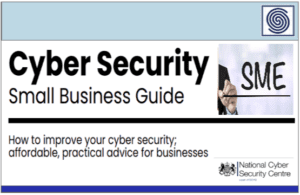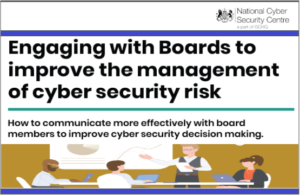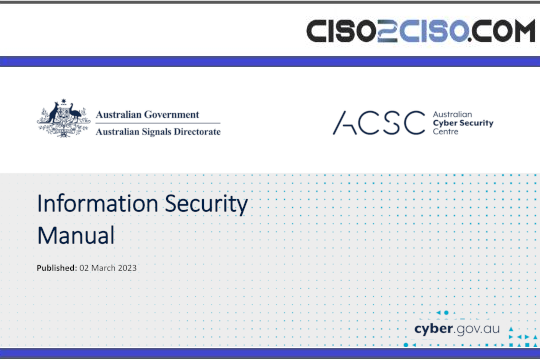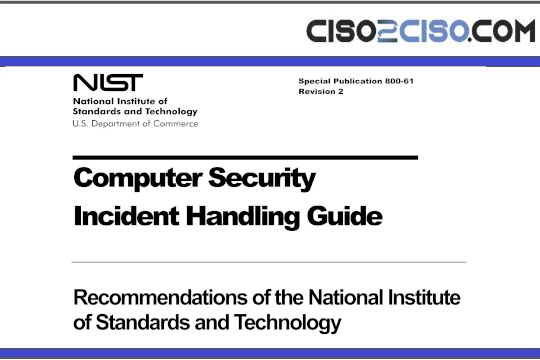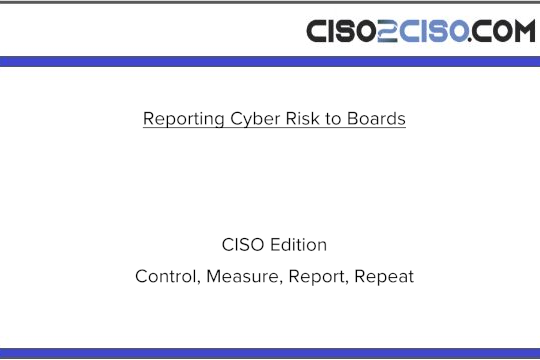Source: www.mcafee.com – Author: Amy Bunn.
There’s little rest for your hard-working smartphone. If you’re like many professionals today, you use it for work, play, and a mix of personal business in between. Now, what if something went wrong with that phone, like loss or theft? Worse yet, what if your smartphone got hacked?
Globally, plenty of people pull double duty with their smartphones. One survey found that 87% of companies have policies that integrate personal devices in the workplace. Therein lies the higher potential for security risks such as data breaches, malware infection, and difficulties in maintaining data privacy and compliance. You see, a smartphone loaded with both business and personal data makes it a desirable, high-value target. It only takes one dedicated hacker—and there are plenty—to infiltrate an unprotected smartphone and access the treasure trove of both your personal and company information in a single effort.
Let’s try to keep that from happening to you. This guide will walk you through exactly how to keep your digital life secure.
Why protecting your phone from hackers is critical
Smartphone hacking is when someone gains unauthorized access to your phone and the vast amount of personal data it contains. As you can imagine, this type of digital break-in can have serious real-world consequences, including financial loss from compromised banking apps, identity theft using your private information, and a complete invasion of your privacy through access to your emails, photos, and messages. This isn’t a distant threat; mobile malware is consistently on the rise, with cybercriminals developing more sophisticated methods to target unsuspecting users. The good news is that you have the power to stop them. Understanding how to protect your phone from hackers is the first step.
How attackers break into smartphones
- Phishing and smishing: These are fraudulent messages via email or SMS that trick you into clicking a malicious link or downloading an infected file. You might unknowingly give away your login credentials or install malware by thinking you’re responding to a legitimate request from a bank or service provider.
- Malicious apps: Cybercriminals create fake apps that look real or hide malware inside seemingly harmless applications. You might download one from outside official app stores, granting it permissions that allow it to steal your data in the background.
- Unsecured public Wi-Fi: When you connect to a public network at a café or airport without a VPN, hackers on the same network can intercept your data. You enable this attack simply by using the free Wi-Fi to check sensitive information like emails or bank accounts.
- SIM-swapping: An attacker convinces your mobile carrier to transfer your phone number to a SIM card they control. They often use personal information gathered from data breaches to impersonate you, effectively hijacking your number to intercept verification codes.
- Spyware: This type of software secretly monitors your activity, recording calls, tracking your location, and stealing passwords. It’s often installed through phishing links or by someone with physical access to your phone.
- Zero-click exploits: These are advanced and rare attacks that can infect a phone without any action from you at all—no clicks needed. While typically used against high-profile targets, they highlight the importance of keeping your device’s software up to date to patch the vulnerabilities they exploit.
Signs your phone may be hacked
- Sudden battery drain: If your phone’s battery life suddenly plummets, it could be due to malware or spyware running constantly in the background.
- Unusually high data usage: A spike in your data consumption could mean a malicious app is transmitting information from your device without your knowledge.
- Overheating: While phones can get warm, consistent overheating without heavy use can be a sign that hidden processes are overworking your phone’s processor.
- Apps you don’t recognize: Discovering new apps on your phone that you never installed is a major red flag for a security breach.
- Constant pop-ups: A sudden increase in strange or aggressive pop-up ads, even when your browser is closed, often indicates adware or other malware.
- Strange activity on your accounts: If friends report receiving odd messages from you on social media or email, a hacker may have taken control of your accounts via your phone.
- Poor performance: If your phone becomes noticeably slow, crashes frequently, or reboots on its own, malicious software could be consuming its resources.
- Security software is disabled: If you find that your mobile security app or other built-in security settings are turned off and you didn’t do it, an attacker may be trying to cover their tracks.
If you notice one or more of these signs, don’t panic. Investigate further and follow the recovery steps below. Sometimes, these issues can be caused by a legitimate but buggy app or an aging battery.
What to do if your phone is hacked
- Disconnect immediately: Turn off Wi-Fi and mobile data on your phone. This severs the hacker’s connection and stops them from sending more of your data.
- Inform your contacts: Warn your friends, family, and colleagues that your phone has been compromised and to be wary of any strange messages coming from your number or accounts.
- Run a security scan: Use a trusted antivirus app to scan your device. It’s designed to find and remove malware that may be causing the problem.
- Change your passwords: From a separate, trusted device like a laptop, immediately change the passwords for your critical accounts—email, banking, social media, and your Apple/Google ID.
- Remove suspicious apps: Manually delete any apps that you don’t recognize or that the security scan flagged as malicious.
- Notify your bank: Contact your financial institutions to alert them of the potential breach. Monitor your accounts closely for any fraudulent activity.
- Consider a factory reset: If you can’t remove the malware, a full factory reset is your best option. This will wipe the phone clean. Before you do this, make sure you have a recent backup of your important data.
7 tips to secure your phone for the future
Once you’ve resolved an attack, the next step is to prevent phone hacking from happening again. Think of it as strengthening your digital front door. As both a parent and professional, I have put together a few things you can do to protect your smartphone from future hacks, so that you can keep your personal and work life safe:
1. Add extra protection with your face, finger, pattern, or PIN
Locking your phone with facial ID, a fingerprint, a pattern, or a PIN is your most basic form of protection, particularly in the event of loss or theft. (Your options will vary depending on the device, operating system, and manufacturer.) Take it a step further for even more protection. Secure the accounts on your phone with strong passwords and use two-factor authentication on the apps that offer it.
2. Use a virtual private network
Don’t hop onto public Wi-Fi networks without protection. A virtual private network (VPN) masks your connection from hackers, allowing you to browse privately on unsecure public networks at airports, cafes, hotels, and the like. With a VPN connection, your sensitive data, documents, and activities are protected from snooping. It’s definitely a great feeling given the amount of personal and professional business we manage with our smartphones.
3. Stick to the official app stores
Both Google Play and Apple’s App Store have measures in place to help prevent potentially dangerous apps from making it into their stores. Malicious apps are often found outside of the app stores, which can run in the background and compromise your personal data such as passwords, credit card numbers, and more—practically everything that you keep on your phone. Further, when you are in the app stores, look closely at the descriptions and reviews for apps before you download them as malicious apps and counterfeits can still find their way into stores.
4. Back up the data in the cloud
Backing up your phone is always a good idea for two reasons:
- First, it makes the process of transitioning to a new phone easy by transferring that backed-up data from your old phone to your new phone.
- Second, it ensures that your data stays with you if your phone is lost or stolen, allowing you to remotely wipe the data while still having a secure copy stored in the cloud.
Both iPhones and Android phones have straightforward ways of backing up your phone regularly.
5. Learn to lock or wipe your phone remotely in case of emergency
Worst case scenario—your phone is gone. Really gone. Either it’s hopelessly lost or got stolen. What now? Lock it remotely or even wipe its data entirely. While it seems like a drastic move, your data is secure in the cloud ready to be restored IF you maintain regular backups as mentioned above. This means hackers won’t be able to access your or your company’s sensitive information, keeping you and your professional business safe. Apple and Google provide their users with a step-by-step guide for remotely wiping devices.
6. Get rid of old apps and update the ones you keep
Needless to say, smartphone updates should always start with the operating system (OS). In addition, you also need to conduct app updates as soon as they’re available, as they contain critical security patches. Take a few moments to swipe through your screen, see which ones you’re truly done with and delete them along with their data. Every extra app is another app that needs updating or that may come with a security issue. Along with deleting the app, also delete your account associated with it. As for the ones you keep, update them regularly and turn on auto-updates if that’s an option.
7. Protect your phone
With so much of your life on your phone, getting security software installed on it can protect you and the things you keep. Whether you’re an Android owner or iOS owner, McAfee+ conducts regular security scans to help you keep your personal, financial, and even company data secure.
Bonus tips: Limit the information stored on your phone
While it’s convenient to have everything at your fingertips, storing too much sensitive information on your smartphone makes you vulnerable if your device is lost, stolen, or compromised. Here are some tips to limit the data on your phone and reduce your risk of identity theft, financial fraud, and privacy breaches.
- Conduct a digital detox: Regularly go through your phone and delete old, unnecessary files. This includes screenshots of boarding passes, expired event tickets, and old photos of sensitive documents. Every piece of data you remove is one less thing a hacker can steal.
- Limit saved payment information: While convenient, letting apps and browsers save your credit card details creates a treasure trove for criminals. Instead, enter payment information manually when you shop or use a secure digital wallet that masks your actual card number.
- Be mindful of notes and messages: Avoid storing passwords, social security numbers, or other credentials in your notes app or text messages. If a hacker gains access, these are often the first places they look for valuable information that could be used for identity theft or to leverage a SIM-swap attack.
Advanced mobile device security considerations
At a deeper level, there are several lesser-known settings you can adjust to protect your phone from being hacked. These advanced steps add extra layers of security to your device.
- Turn off Bluetooth and NFC when not in use: Leaving Bluetooth and near field communication (NFC) on all the time makes your device discoverable and potential gateways for attackers. To secure your phone, simply toggle them off from your control center or settings menu when you aren’t actively using them.
- Revoke unnecessary app permissions: Many apps request access to your contacts, location, camera, and microphone even when they don’t need it. This is a common method for data harvesting. Periodically go to your phone’s privacy settings (on iOS, look under Privacy & Security; on Android, Security and Privacy, then Permission manager) and review which apps have access to what. If a photo-editing app doesn’t need your location, revoke that permission.
- Disable developer options: This is a hidden menu intended for app developers that provides deep system access. An attacker with physical or remote access could exploit these settings. Make sure to disable it. On Android, you can typically find the toggle to turn Developer Options off at the bottom of the main Settings menu. This is a simple but effective way to protect your phone from hacking.
- Enable auto-delete for temporary files and messages: Your browser history, text messages, and temporary app files can build up and contain sensitive information. Both iOS and Android have settings to automatically delete old messages (e.g., after 30 days or a year). Similarly, you can periodically clear the cache and data for your web browser and other apps to remove any lingering digital footprints.
- Encrypt your device storage: Encryption is a powerful digital vault for your data that is built into most modern smartphones. Encryption scrambles your data—photos, contacts, messages—into unreadable code. Without your passcode, fingerprint, or Face ID, it’s just gibberish. Using a complex, unique passcode instead of a simple four-digit PIN makes it exponentially harder for a thief to break in.
FAQs about smartphone hacking
Can my phone’s camera be hacked?
Yes, malware or spyware can give a hacker access to your camera and microphone, allowing them to see and hear you without your knowledge. To prevent this, be cautious about app permissions and consider using a physical camera cover for peace of mind.
Can I get hacked just by visiting a website?
It’s possible. Some malicious websites can attempt to automatically download malware or exploit browser vulnerabilities to compromise your device. Using a secure browser and comprehensive security software that warns you of risky sites is your best defense.
Is my phone safe from hackers when it’s turned off?
For the vast majority of users, a phone that is completely powered off cannot be hacked remotely. Hacking requires the device’s operating system and network connections to be active, so turning it off effectively cuts that connection.
Can answering a phone call hack my phone?
Simply answering a call from an unknown number is highly unlikely to hack your phone. The real danger lies in social engineering, where the scammer on the other end tries to trick you into revealing personal information, visiting a malicious website, or dialing a specific code.
Final thoughts
Your smartphone is central to your life, and understanding how to keep your phone safe from hackers is not about being fearful, but about being prepared. By taking proactive and consistent steps, you create powerful layers of defense that make you a much harder target for cybercriminals. Combining smart habits with the advanced protection offered by security solutions like McAfee+ ensures your data, privacy, and peace of mind are always safeguarded. Stay informed about new threats, keep your security software current, and enjoy all the good your connected life has to offer, safely and securely.

McAfee Mobile Security
Keep personal info private, avoid scams, and protect yourself with AI-powered technology.
Original Post url: https://www.mcafee.com/blogs/mobile-security/7-tips-to-protect-your-smartphone-from-getting-hacked/
Category & Tags: How To Guides and Tutorials,Mobile Security,mobile security,smart phone security,smartphone security,smartphone vulnerabilities – How To Guides and Tutorials,Mobile Security,mobile security,smart phone security,smartphone security,smartphone vulnerabilities
Views: 2






